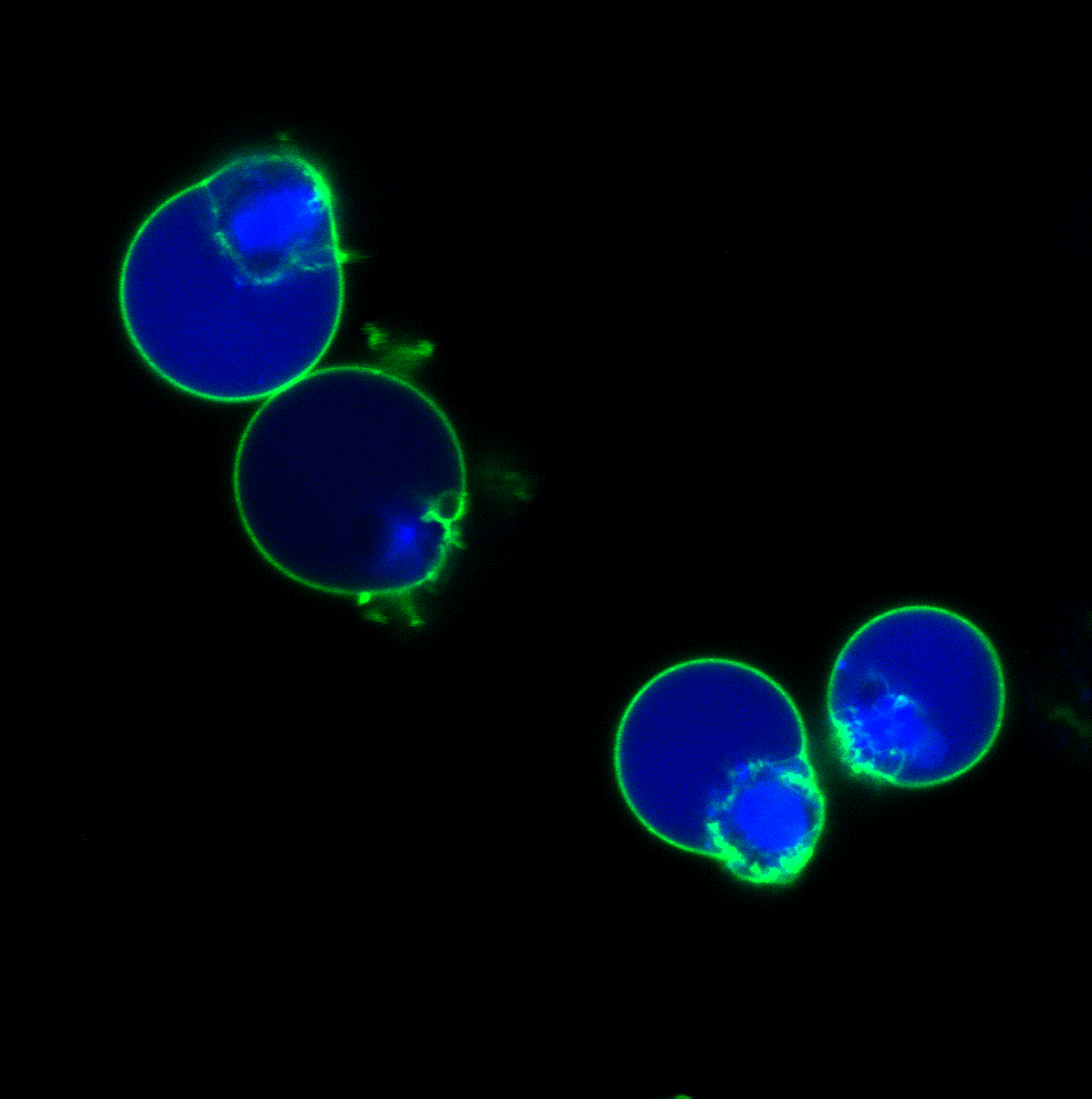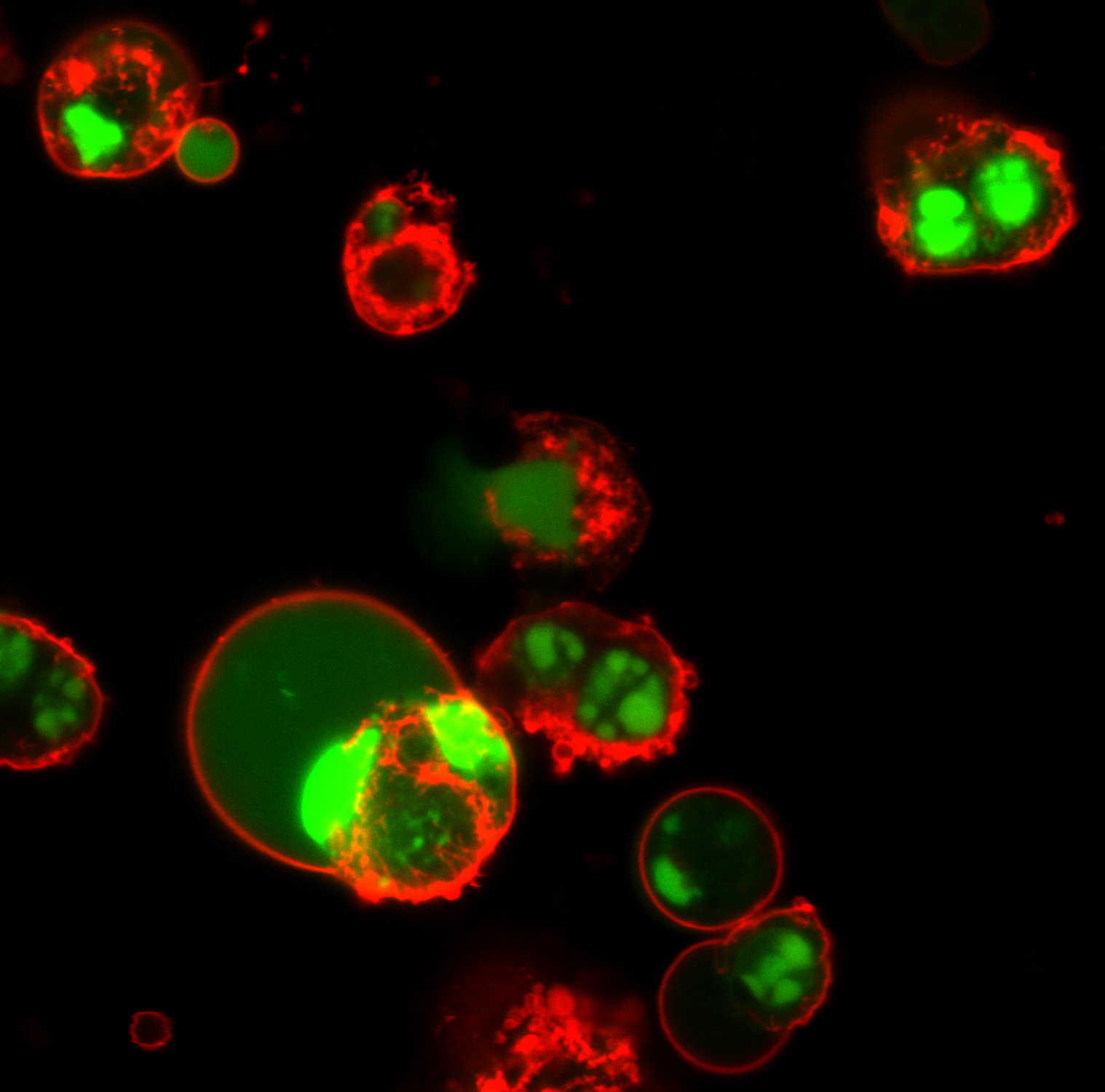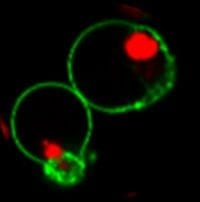For flow cytometry, microscopy, or live cell imaging.
Formaldehyde-fixable nuclear staining.
Green fluorescent NucView® 488
Orange fluorescent NucView® 530
HOW IT WORKS
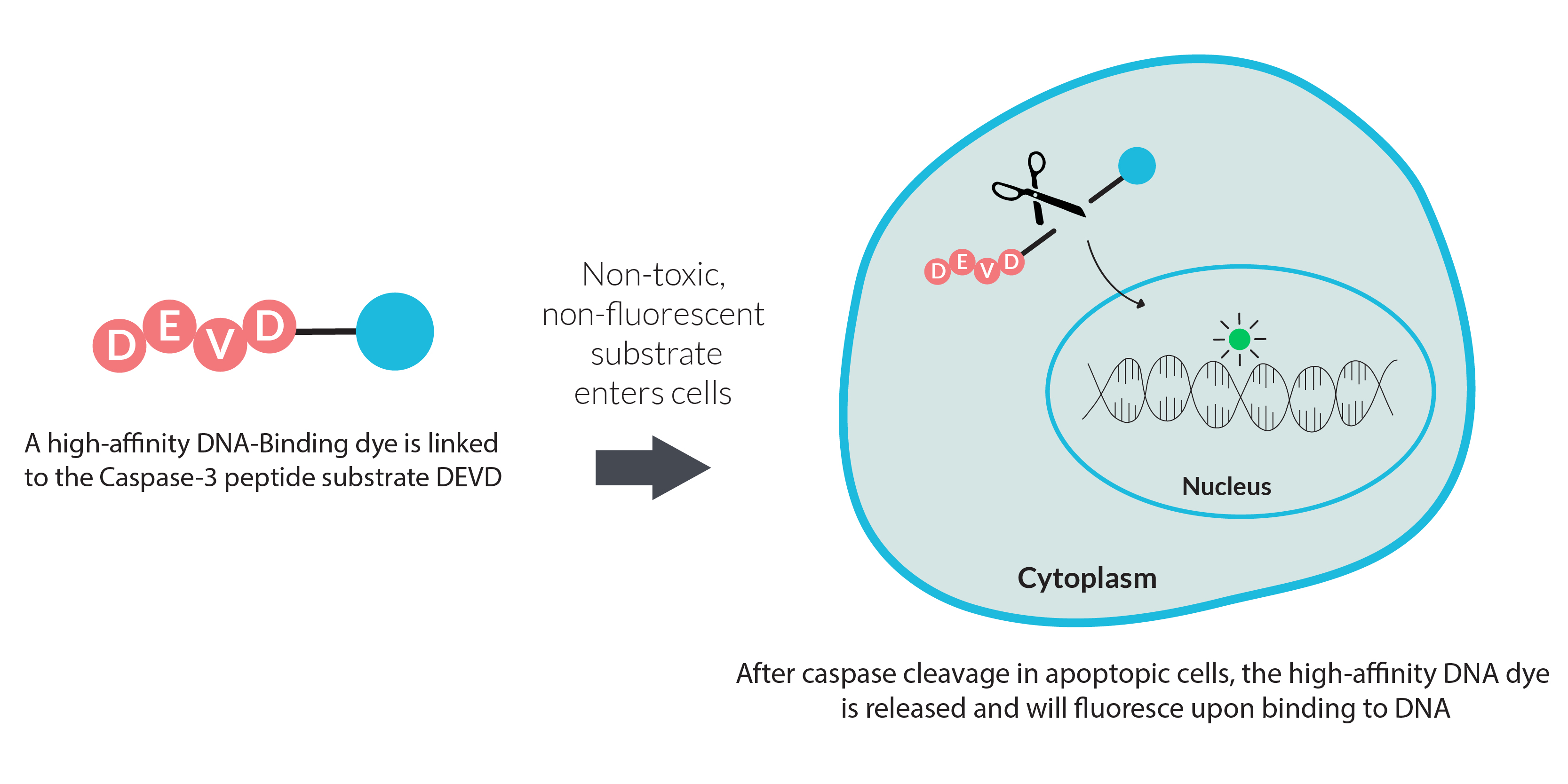
NucView® caspase-3 substrates are based on novel fluorogenic DNA dyes that have been coupled to the caspase-3/7 recognition sequence (DEVD). When introduced to cells, the substrate is initially non-fluorescent and is able to penetrate the plasma membrane and enter the cytoplasm. During apoptosis, caspase-3/7 cleaves the substrate and releases the high-affinity DNA dye which leads to nuclear fluorescent staining. Consequently, NucView caspase-3 substrates are bifunctional, allowing detection of caspase-3/7 activity and visualization of morphological changes in the nucleus during apoptosis.
In contrast to other fluorogenic caspase substrates or fluorescent caspase inhibitor based (FLICA) assays that which inhibit caspase activity, NucView® caspase-3 substrates can be used to detect caspase-3/7 activity in live cells without inhibiting apoptosis progression. Staining is also compatible with subsequent fixation and permeabilization for downstream immunostaining.
Features
- Dual detection of caspase activity and nuclear morphology
- Rapid, no-wash, endpoint or real-time assays
- Non-toxic, allowing for multi-day experiments
- For flow cytometry, microscopy, or live cell imaging systems
- Available as stand-alone substrates or in kits paired with other apoptosis or necrosis probes
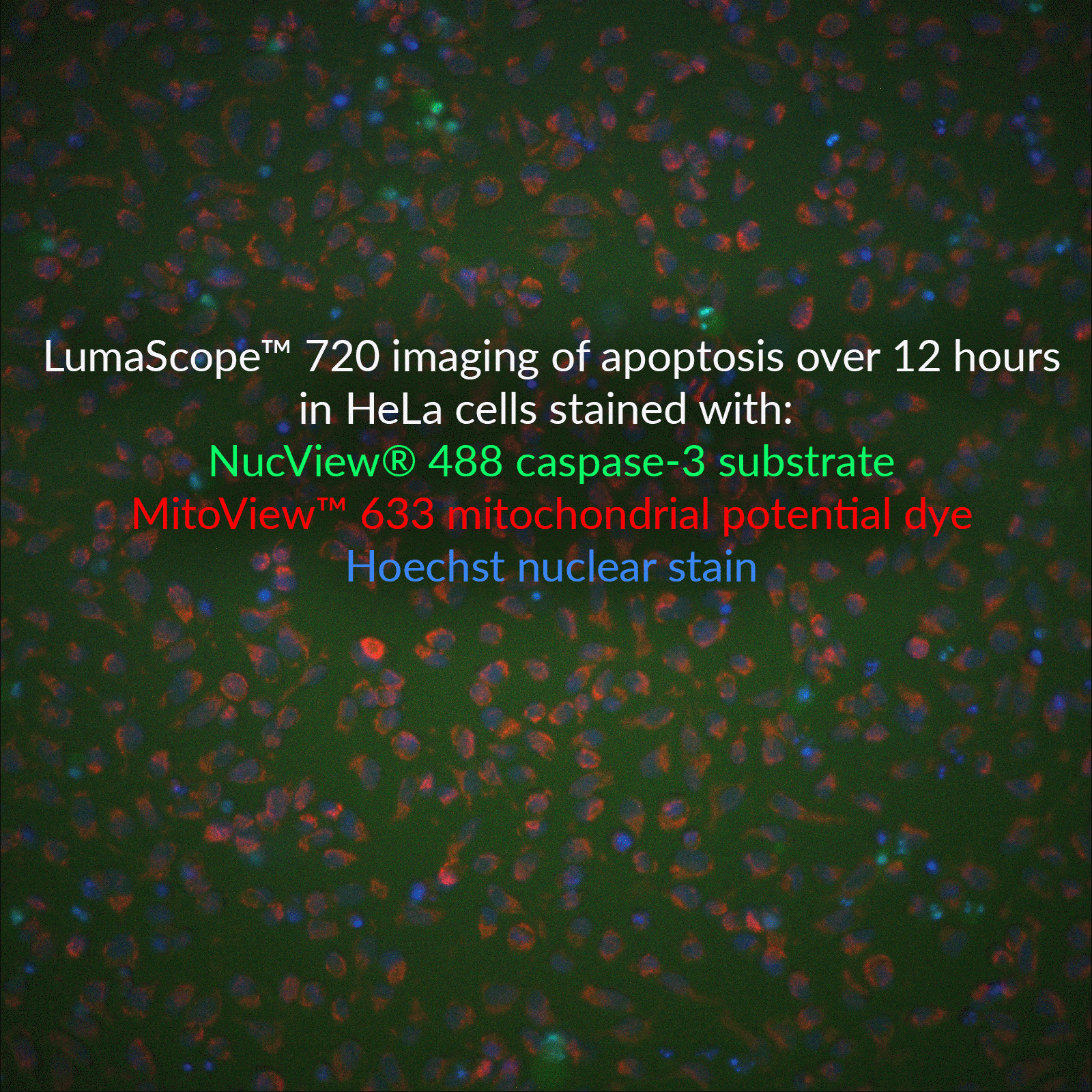
Available in Blue, Green, or Red Fluorescence
Analyze Apoptosis by Flow Cytometry in Live Cells
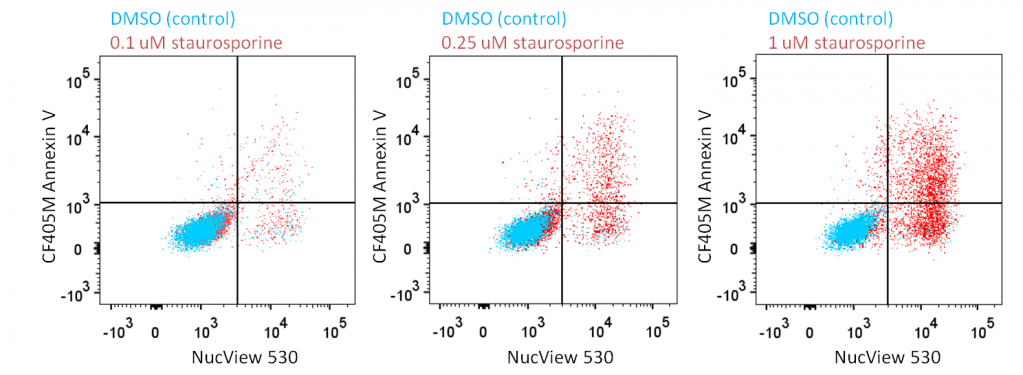
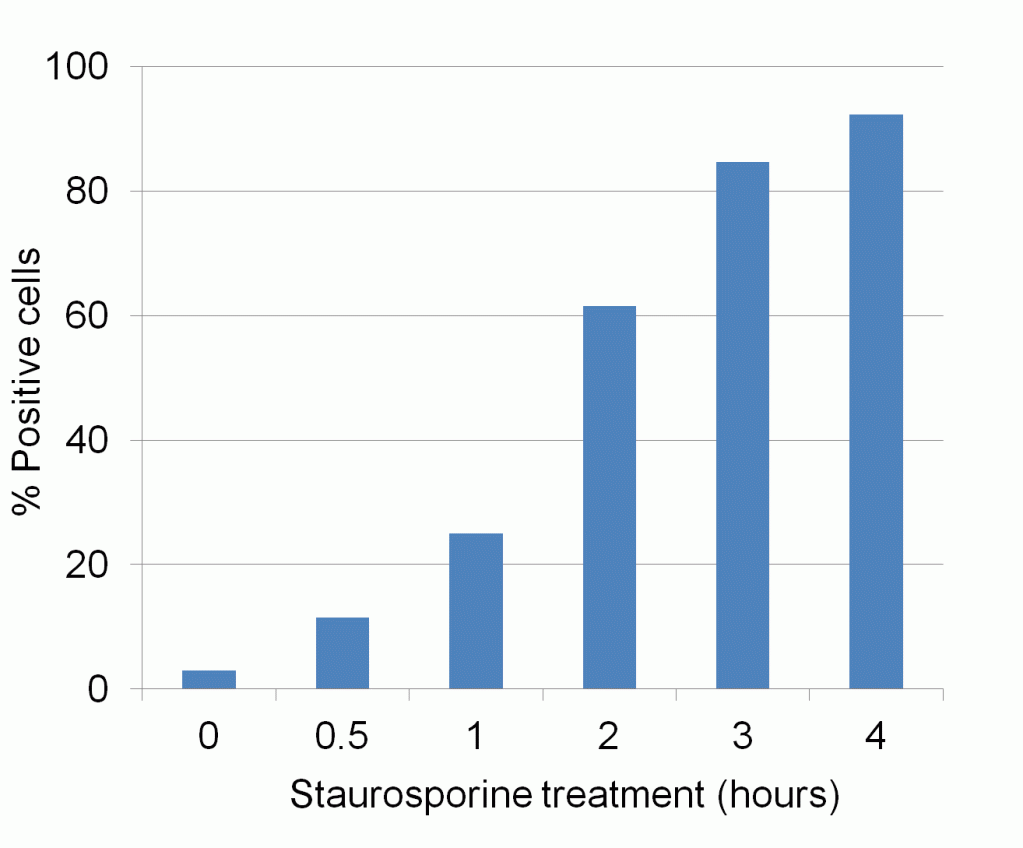
Dual Detection Kits
Explore assay kits that combine the advantage of NucView® real-time apoptosis analysis with other probes for monitoring necrosis, membrane potential, or other apoptosis markers.
- Dual Apoptosis Kit: NucView® 488 and Annexin V labeled with red or far-red dyes for co-detection of two apoptotic events, caspase cleavage and phosphatidylserine (PS) translocation.
- Dual Apoptosis Kit: NucView® 488 and MitoView™ 633 for co-detection of two apoptotic events, caspase cleavage and loss of mitochondrial membrane potential.
- Apoptosis/Necrosis Kit: NucView® 488 and RedDot™2 for concurrent measurement of caspase cleavage (apoptosis) and loss of membrane integrity (necrosis).
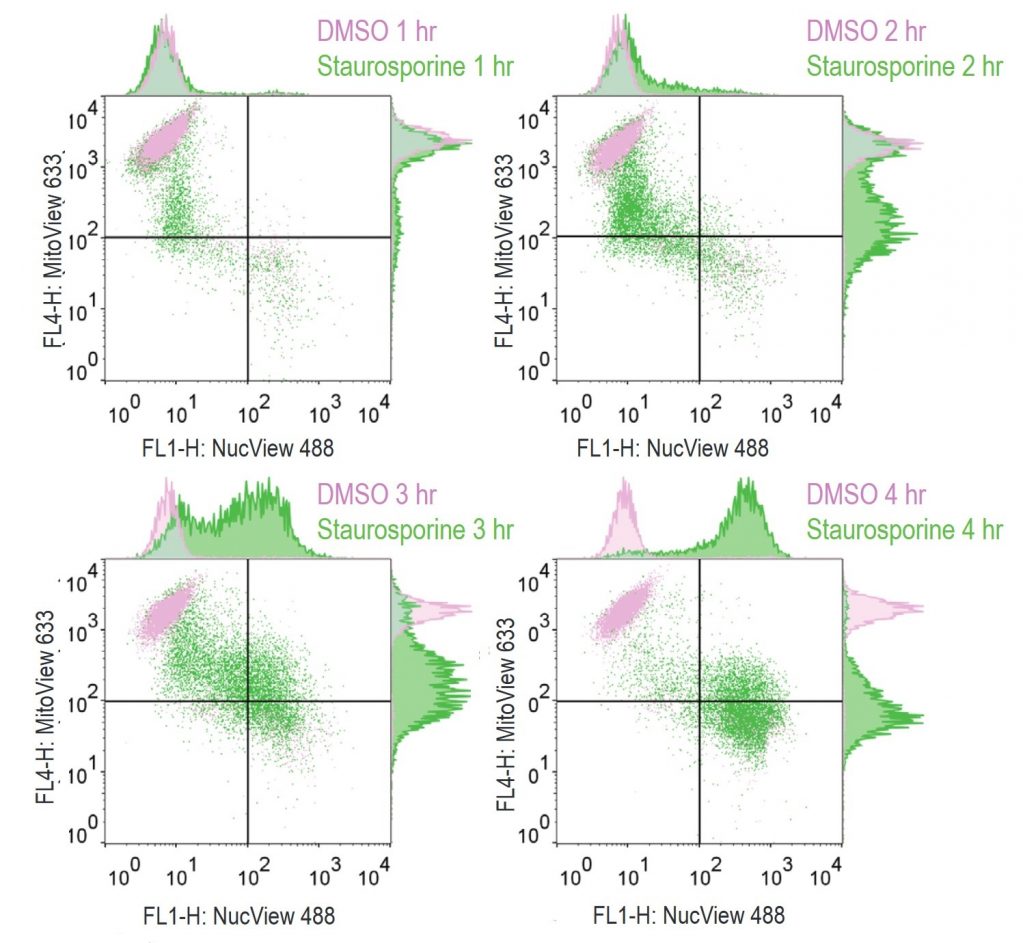
NucView® Caspase-3 Substrates and Kits | Catalog No. | Features |
|---|---|---|
| NucView® 405 Caspase-3 Substrate, 1 mM in DMSO | 10405 | Blue fluorescence for flow cytometry in the Pacific Blue® channel or microscopy with the 405 nm laser |
| NucView® 405 Caspase-3 Substrate, 1 mM in PBS | 10407 | NucView® 405 substrate in PBS, for DMSO-sensitive cell types |
| NucView® 488 Caspase-3 Substrate, 1 mM in DMSO | 10402 | Green fluorescent substrate validated in more than 100 cell types and 200 publications |
| NucView® 488 Caspase-3 Substrate, 1 mM in PBS | 10403 | NucView® 488 substrate in PBS, for DMSO-sensitive cell types |
| NucView® 530 Caspase-3 Substrate, 1 mM in DMSO | 10406 | Orange fluorescence for microscopy in the Cy®3 channel or flow cytometry in the R-PE channel |
| NucView® 530 Caspase-3 Substrate, 1 mM in PBS | 10408 | NucView® 530 substrate in PBS, for DMSO-sensitive cell types |
| NucView® 488 and MitoView™ 633 Apotosis Detection Kit | 30062 | NucView® 488 and far-red fluorescent MitoView™ 633 for the Cy®5 channel |
| NucView® 488 and RedDot™ 2 Apoptosis & Necrosis Kit | 30072 | NucView® 488 and far-red dead cell DNA dye RedDot™ 2 for the Cy®5 channel |
| Dual Apoptosis Assay with NucView® 488 and CF®594 Annexin V | 30067 | NucView® 488 and red fluorescent Annexin V apoptosis probe |
| Dual Apoptosis Assay with NucView® 488 and CF®640R Annexin V | 30073 | NucView® 488 and far-red fluorescent Annexin V apoptosis probe |
THE GOLD STANDARD FOR MONITORING APOPTOSIS
NucView® 488 is Validated in More Than 100 Cell Types and 200 Publications
Highlighted Citation: NucView® 488 was used in a T cell-mediated tumor cell killing assay by Lim et al. in a study investigating the role of inflammation on PD-L1 stabilization. Results show T-cell mediated killing of PD-L1 expressing BT549 ductal carcinoma cells was no longer suppressed when treated with neutralizing TNF-α antibody. In addition, PD-L1 depleted cells did not respond to either cytokine enriched macrophage-conditioned medium (MP) or TNF-α antibody, suggesting that PD-L1 expression is required for TNF- α-mediated suppression of T cell activity.
See the full list of references here.
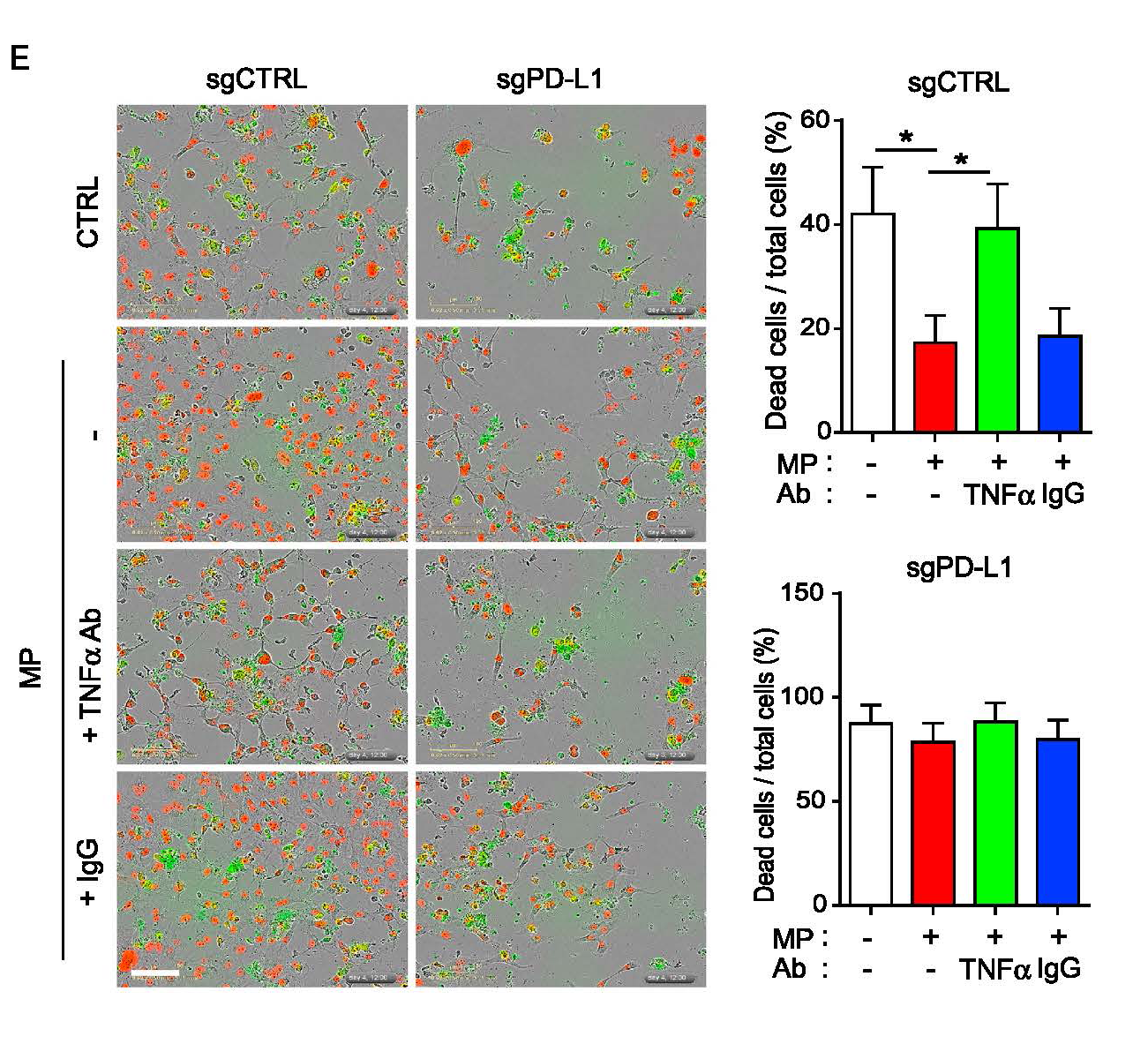
View Products
Dual Apoptosis Assay with NucView® 488 Caspase-3 Substrate & Annexin V
30030, 30067, - 30073View allHide
NucView® Caspase-3 Enzyme Substrates
10405-T, 10405, 10407-T, 10407, 10402-T, 10402, 10403-T, 10403, 10406-T, 10406, 10408-T, - 10408View allHide
NucView® 488 & MitoView™ 633 Apoptosis Assay Kit
NucView® 488 & RedDot™ 2 Apoptosis & Necrosis Kit
NucView® 488 Caspase-3 Assay Kit for Live Cells
30029, - 30029-TView allHide


